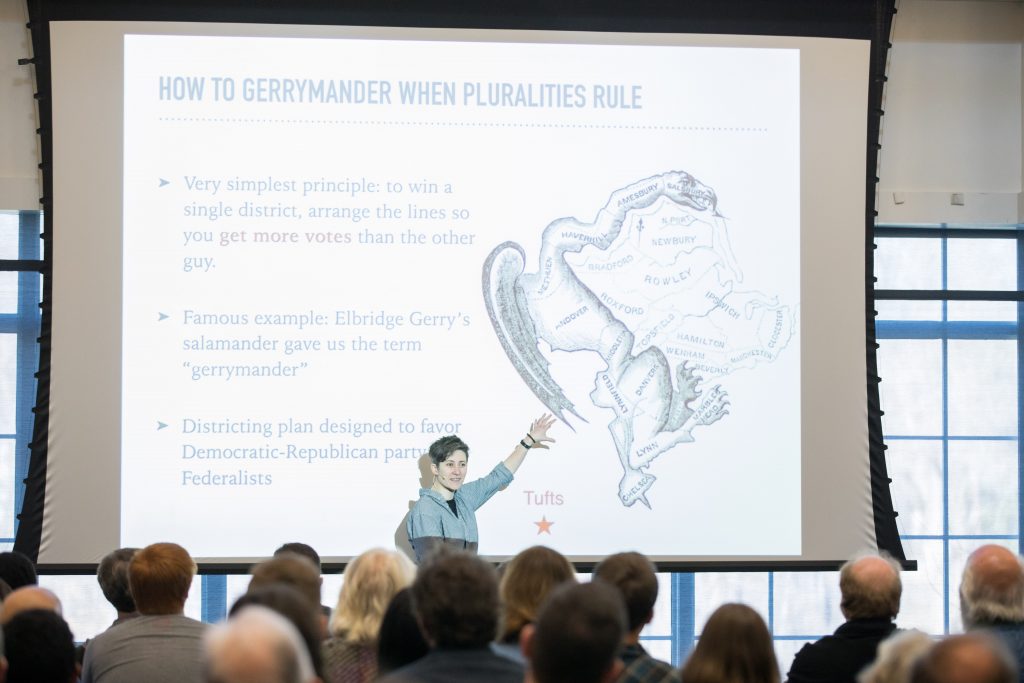
Moon Duchin, associate professor of mathematics at Tufts University, visited TCNJ on Feb. 27 to share her insights into the mathematical side of a hot-button political issue: gerrymandering.
Earlier this year, Pennsylvania’s congressional map was ruled unconstitutional as a result of the practice, where the boundaries of an electoral constituency are manipulated or redrawn in order to favor a certain political party.
Duchin, who founded the Metric Geometry and Gerrymandering Group at Tufts, seeks to combat injustice caused by this practice by using mathematics. She’s currently working with Pennsylvania to evaluate the state’s redistricting maps.
One form of gerrymandering, called packing, involves drawing lines of the map so that members of a certain population, often the minority, are all grouped together in one place in an effort to reduce the opposing party’s voting power. Another tactic used is cracking, where lines are drawn so that a population is widely dispersed in numbers too insignificant to count towards a vote.
So how does geometry fit in?
A “fair” map, Duchin explained, should show compactness—meaning the shapes of the districts should be straightforward. A strangely-shaped district (i.e., one that isn’t circular or rectangular) is a red flag.
“When you’re drawn out of one district, you’re drawn into another,” explained Duchin. Often, groups who have been “gerrymandered” into a completely different district are powerless to fight back. By studying the mathematical aspect of a gerrymandered map through size and shape of a district, Duchin hopes to combat the injustices caused by this political manipulation.
Duchin’s talk, “Mathematics of Gerrymandering: Geometry, Algorithms, and Democracy,” was hosted by the School of Science and the Department of Mathematics and Statistics.
—Catherine Bialkowski ’18
